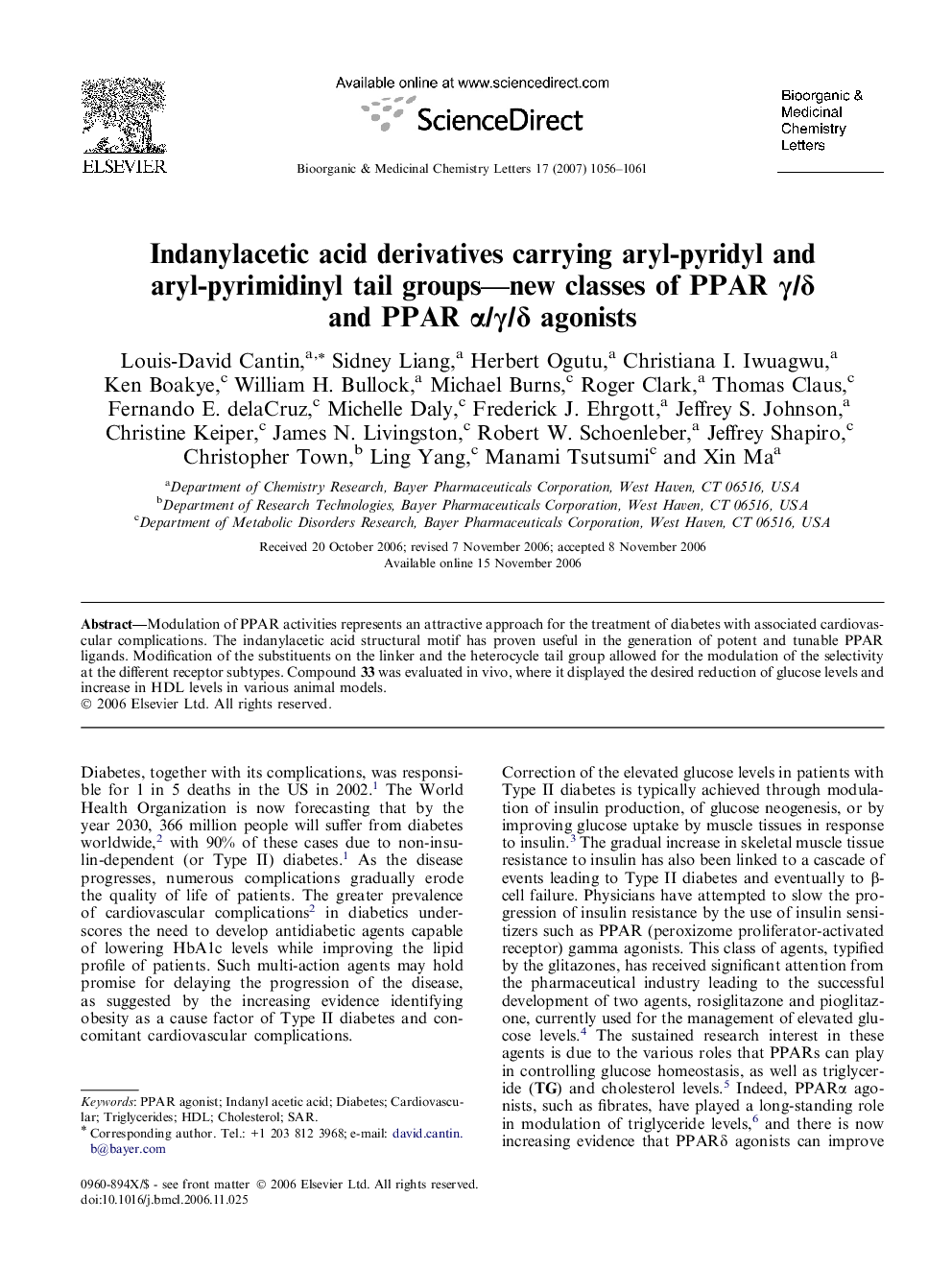| Article ID | Journal | Published Year | Pages | File Type |
|---|---|---|---|---|
| 1378278 | Bioorganic & Medicinal Chemistry Letters | 2007 | 6 Pages |
Modulation of PPAR activities represents an attractive approach for the treatment of diabetes with associated cardiovascular complications. The indanylacetic acid structural motif has proven useful in the generation of potent and tunable PPAR ligands. Modification of the substituents on the linker and the heterocycle tail group allowed for the modulation of the selectivity at the different receptor subtypes. Compound 33 was evaluated in vivo, where it displayed the desired reduction of glucose levels and increase in HDL levels in various animal models.
Graphical abstractThe indanylacetic acid structural motif has proven useful in the generation of potent and tunable PPAR ligands. Modification of the substituents on the linker and the heterocycle tail group modulated the selectivity at the different receptor subtypes.Figure optionsDownload full-size imageDownload as PowerPoint slide
